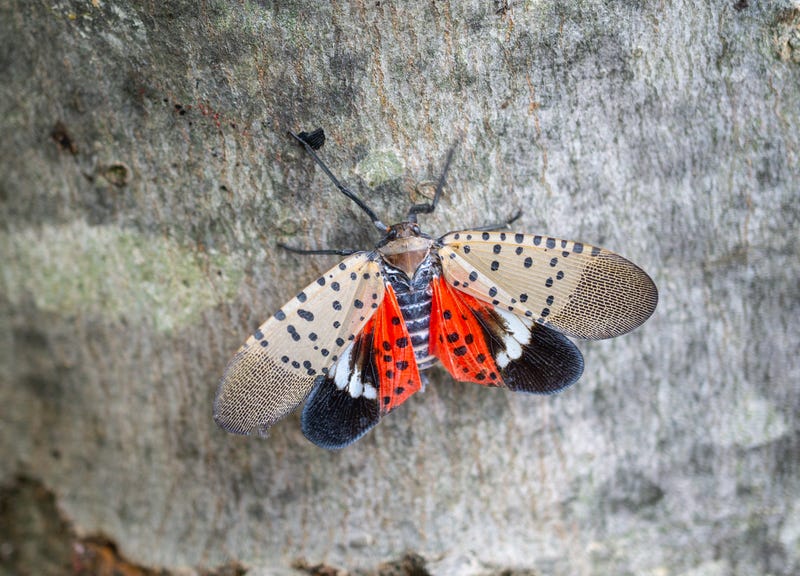
The spotted lanternfly, an invasive plant hopper native to eastern Asia, is spreading across the United States -- and it has wildlife experts concerned.
Recent reports indicate the bugs have settled in Canada, New York, Maryland, Virginia and North Carolina, and are now migrating to the Midwest. Earlier this month, officials in Michigan confirmed the state's first detection of the species.
The spotted lanternfly first appeared in Pennsylvania in 2014 and spread rapidly. Confirmed observations of spotted lanternfly have since been recorded in 12 states including Connecticut, Delaware, Indiana, Maryland, Massachusetts, New Jersey, New York, North Carolina, Ohio, Pennsylvania, Virginia and West Virginia, according to the U.S. Department of Agriculture.
The bugs are not dangerous to humans or pets, but they do pose a serious risk to agriculture. If allowed to spread in the U.S., spotted lanternfly could seriously impact the country's grape, orchard and logging industries, according to the USDA.
Spotted lanternfly prefers to feed on the tree-of-heaven, an invasive species itself, and grapevines. The pests also feed on a wide range of fruit, ornamental and woody trees, such as black walnut, river birch, willow, sumac and red maple. When feeding, spotted lanternfly produces a sticky liquid that can collect on the ground or surrounding vegetation and cause the growth of sooty mold and black-colored fungi, which can discolor and kill plants.
Joanne Foreman, an invasive species communications coordinator for the Michigan Department of Natural Resources, said the bug's full impact to local ecosystems is still unknown.
"The research community is still learning about the spotted lanternfly and its potential for impacting our natural resources as well as treatments to eliminate this pest," Foreman said in a statement. "It also could have an effect on important timber species statewide. What the long-term impact might be is unknown."
A 2019 economic impact study estimated that in Pennsylvania alone, the insect could cost the state $324 million annually and more than 2,800 jobs, according to the Pennsylvania Department of Agriculture.
Officials agree that prevention and early detection are vital to limiting the spread. The pest moves easily on firewood, tires, campers and vehicles, and can also hitchhike on nursery stock transported from an infested state.
Many states are urging the public to kill the bugs on sight. People can also get sticky traps to help catch them, but officials say it is especially important that the eggs don't get transported.
Starting in the fall, spotted lanternfly seek out outdoor surfaces and lay mud-like egg masses on tree bark, outdoor gear (such as lawnmowers, bikes, and grills), vehicles and more. The egg masses are about an inch long and resemble a smear of mud. If you spot an egg mass, scrape it into a plastic bag containing hand sanitizer or rubbing alcohol to kill them.
Consumers should buy firewood from local sources and burn it all before eggs have a chance to hatch in May. People should also avoid parking their vehicles under trees or near bushes where the insects can lay eggs or stow away.
Anyone who finds a spotted lanternfly is encouraged to take a picture of it and note the location to report it to your State Department of Agriculture before killing it.
LISTEN on the Audacy App
Sign Up and Follow Audacy
Facebook | Twitter | Instagram

